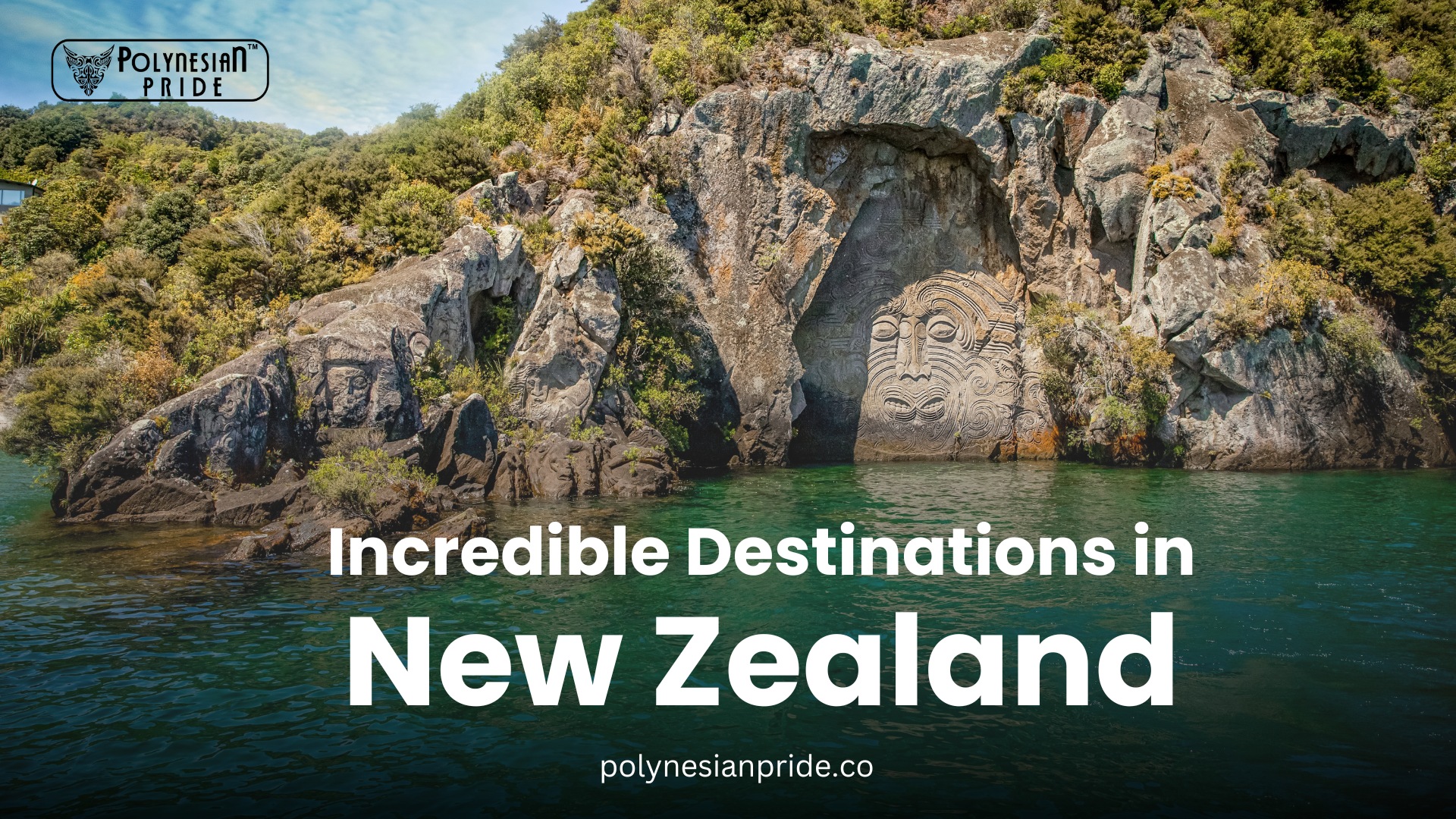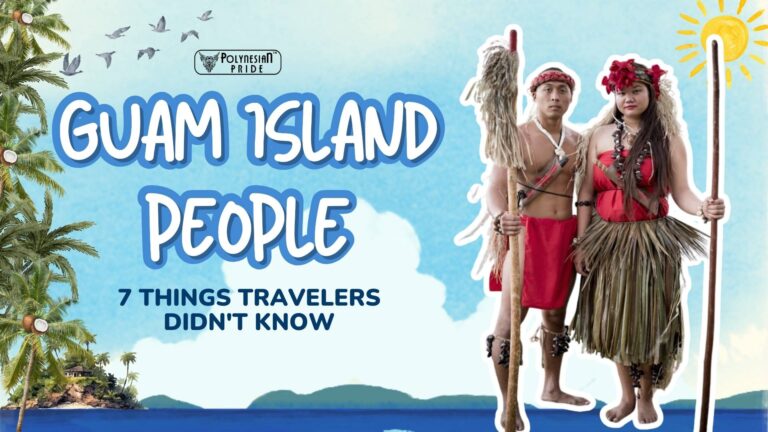Top 10 Incredible Destinations to Explore in New Zealand

Overview of New Zealand as a travel destination
New Zealand, an island nation in the southwestern Pacific Ocean, is a paradise for travelers seeking stunning landscapes, diverse cultures, and unforgettable experiences. Renowned for its breathtaking scenery, from lush forests and snow-capped mountains to pristine beaches and vibrant cities, New Zealand offers a unique blend of natural beauty and rich cultural heritage.
While opinions on the “best” of anything are inherently personal, we’ve curated a selection of destinations that, in our view, exemplify New Zealand’s rich diversity and offer one-of-a-kind experiences that set them apart from others around the globe.
10. Coromandel Peninsula and Hot Water Beach, North Island
The Coromandel Peninsula is one of our favorite summer destinations, and it has golden sandy beaches like Whangamata and Hahei. Hahei is particularly popular because of nearby Cathedral Bay and its natural rock arches, and you’ll often see people kayaking along the coast to get there, although we prefer paddling.

But since this “best of” list is primarily meant to highlight unique experiences, it wouldn’t be complete without mentioning Hot Water Beach, which takes its name from the geothermal hot springs. The spring is actually beneath the waves most of the day, but at low tide, the spring is exposed, and that’s when the fun begins. We bet you’ve never tried digging your thermal pool on the beach.
Of course, there’s more to the Coromandel Peninsula than just beaches. To the north are the historic gold mining towns of Thames and the picturesque village of Coromandel. The further north you travel, the more remote the area becomes until you finally reach the tip of the peninsula and the campgrounds at Port Jackson and Fletcher Bay, which feel like a world away from it all.
9. Geothermal attractions in Rotorua, North Island
The city of Rotorua is located on the shores of Lake Rotorua and is actually a hotbed of geothermal activity. A large volcano that last erupted about 240,000 years ago collapsed, forming the lake.

Today, Rotorua’s volcanic heritage is on full display, offering visitors a unique experience. One of the most dramatic attractions is Wai-o-tapu Thermal Wonderland, where you can marvel at the vibrant colors of the Champagne Pools and watch the massive eruption of Lady Knox Geyser. Even in the city center, Kuirau Park offers a unique experience, New Zealand’s only free public geothermal park. Stroll along the sidewalks and past bubbling mud pools and steaming hot springs in the city center.
Maori culture
Rotorua is also an important center of Maori culture, and your visit wouldn’t be complete without immersing yourself in the traditions and customs of New Zealand’s ingenious people. You can enjoy exciting cultural performances, take guided tours, and visit marae (a Maori gathering place) to gain a deeper understanding of Maori life and heritage.
Whether exploring geothermal wonders or immersing yourself in rich Maori culture, Rotorua offers a unique and enriching experience for all visitors.
8. West Coast Glaciers, South Island
The Southern Alps stretch along the South Island of New Zealand and are home to most of our country’s glaciers. Most of these glaciers are in inaccessible places, so you have to be determined to experience them yourself.

Fortunately, Franz Josef and Fox Glaciers are two exceptions. Located in Westland Tai Poutini National Park on the west coast, these glaciers are two of our most accessible. They are also unique in that they are one of the few glaciers in the world that reach almost sea level.
National Highway 6 runs along the island’s west coast, just 10 kilometers (6 miles) from the glacier. Therefore, it is no surprise that they are one of the main tourist attractions in the area.
Many free short hikes offer great views of the glacier, but to truly experience it up close, you’ll want to do it with Franz Josef Glacier Guides or Fox Glacier Guiding. Both outfits offer a range of options, from hiking to heli-hiking to ice climbing, giving you a truly unforgettable experience.
7. Auckland West Coast Beaches, North Island
Most travelers arriving in New Zealand land at Auckland International Airport, the country’s largest airport. With around 1.6 million residents, Auckland is New Zealand’s largest city and offers everything you’d expect from a modern, vibrant centre.

Of course, Auckland’s city center is a shopping mecca, and the bustling waterfront is filled with restaurants and every kind of cuisine imaginable. While all of this is worth a visit, it’s not that different from what you’ll experience in other major cities around the world. Since this list is meant to highlight aspects of New Zealand that are unique or surprising, what is it about Auckland that might surprise us?
For us personally, it’s Auckland’s black sand beach. Piha is about an hour’s drive from Auckland and is one of several popular beaches on the west coast. This rugged coastline is spectacular and worth a visit for the scenery alone. While you can swim at these beaches, they are known for their strong currents. Fortunately, there are lifeguards on duty during the peak summer months to ensure the safety of visitors.
To the south of Piha is Karekare, to the north is Te Henga (Bessels Beach), and further north is Muriwai Beach, a rather unique but smelly beach. The dense gannet colony makes this stretch of coast one of our favorite places in Auckland.
6. Tongariro National Park, North Island
Tongariro National Park is located in the central plateau of New Zealand’s North Island and is a unique UNESCO World Heritage Site. Officially established in 1894, it is New Zealand’s oldest national park and one of the oldest in the world.
The park offers:
- Mount Ruapehu, the highest peak in the North Island
- Whakapapa, New Zealand’s largest ski resort
- The famous Tongariro Alpine Crossing

The Tongariro Alpine Crossing is a 21-kilometer (13-mile) hiking route through stunning landscapes, including active volcanic caldera, crater lakes, and the remains of volcanic activity and glaciation over the past 275,000 years. Other striking landscapes formed.
Tongariro Alpine Crossing
This hike is often regarded as one of the best day hikes in New Zealand, and having done it many times ourselves (in our backyard, actually), we couldn’t agree more. You can hike on your own, but if you have no experience in alpine environments, especially in winter, a group tour is a safer option.
The crossing is just one of the many walking and hiking trails in Tongariro National Park. If you love nature as much as we do, this park is a must-visit.
Lake Taupo
Lake Taupo is located in the center of the North Island, just an hour and a half drive north of Tongariro National Park. It is New Zealand’s largest lake and a popular tourist attraction. The town of Taupo (our hometown!) is a small and friendly place with lots to do and see, making it a great stop on the way to and from Tongariro.

For adrenaline junkies, Taupo won’t disappoint. Skydiving is very popular here, offering the thrill of free-falling over stunning lakes. You can also try bungee jumping or jet boating to the base of Huka Falls, one of the must-see attractions. Mountain biking is another great way to explore your beautiful surroundings. There are routes for all difficulty levels.
Māori rock carvings at Lake Taupo
If you prefer a more relaxed pace, especially after completing the Tongariro Crossing, consider a Lake Taupo boat tour. You’ll see famous Maori rock carvings and enjoy views of Mount Ngauruhoe and Mount Ruapehu at the southern end of the lake. Take a scenic flight by helicopter or Taupo’s famous seaplane for an aerial view of the city.
After the excitement, relax in one of Taupo’s natural thermal pools, with Wairakei Terrace being our personal favorite.
Napier
If you’re visiting Taupo, consider adding Napier to your itinerary. This charming coastal town is located in the Hawke’s Bay region, just a two-hour drive from Taupo along the scenic State Highway 5, which traverses the Kaweka Ranges.

Known for its stunning Art Deco architecture, Napier is a must-visit for history and design lovers. After the devastating 7.8 magnitude earthquake in 1931, the city was rebuilt in the Art Deco style popular at the time. Today, you can take a walking tour of the beautifully preserved Art Deco buildings and feel like you’ve stepped back in time.
But Napier offers more than just architecture. The Hawke’s Bay region is famous for its wineries, and there’s plenty to explore in and around the city. Napier is known for having some of the best weather in New Zealand. It’s a great place to visit year-round, but it’s especially attractive if you’re looking for warmth and sunshine.
5. Waitomo Caves, North Island
Located in the heart of New Zealand’s North Island, Waitomo Caves are a spectacular subterranean wonderland famous for their captivating glowworm displays. These caves are part of an extensive underground system featuring dramatic limestone formations, stalactites, and stalagmites that have formed over millions of years.

The highlight of the Waitomo Caves experience is the Glowworm Grotto, where thousands of tiny glowworms illuminate the cave ceilings, creating a magical, starry-night effect. Visitors can explore this natural marvel through guided tours, which often include serene boat rides that glide beneath the glowing canopy, or, for the more adventurous, options like blackwater rafting and abseiling.
The caves not only offer an enchanting visual experience but also a fascinating geological and historical journey, making them a must-visit destination for anyone traveling to New Zealand. Whether you’re an adventure seeker or a nature enthusiast, Waitomo Caves provide an unforgettable glimpse into the hidden beauty of the underground world.
4. Fiordland National Park and Milford Sound, South Island
Located on the southwestern tip of the South Island, Fiordland National Park is a truly unique and special place that should be on every New Zealander’s bucket list. Yes, it’s remote and requires some effort to get to, but the reward is truly spectacular scenery that you won’t find anywhere else in the country.
As the name suggests, Fiordland National Park is home to Fiordland (the New Zealand spelling), which are essentially deep, narrow bays with steep hillsides formed by glacial erosion. Interestingly, our fjords are also known as Fiordland, and of the 15 named fjords in the park, Milford Sound and Doubtful Sound are two of the most popular.

Milford Sound is by far the most accessible fiord, with its own airport and direct access to State Highway 94. Driving to Milford Sound is an unforgettable experience in itself, driving through glacier-carved valleys and past crystal-clear valley lakes.
Once you arrive at Milford Sound, there’s plenty to see and do, including cruises, scenic flights, and bus tours. Alternatively, you can join a kayaking tour to experience the fjord’s towering cliffs and thundering waterfalls from a different perspective. There are also a number of short walks in the area, from leisurely strolls along the coast to more challenging trails offering stunning views.
Speaking of hiking, Fiordland National Park is also home to one of New Zealand’s best hiking trails, the Milford Track. At just over 53 kilometers (33 miles) long, this multi-day hike isn’t for everyone, but day-hiking options allow you to quickly experience the entire hike.
3. Waitangi and Bay of Islands, North Island
The Northland region of the North Island is famous for its warm climate and golden beaches. The beaches alone are enough to give you a reason to explore this stunning part of the country. However, the real significance of the area from a historical perspective is that it is the site of the Treaty of Waitangi.
The Treaty of Waitangi is an agreement signed in 1840 between Maori rangatira (chiefs) and representatives of the British Crown, and is considered New Zealand’s founding document. The original intention of the treaty was to establish British sovereignty over New Zealand in order to protect the indigenous Maori people from European settlers and other foreign powers who had a stake in the country at the time.
Paihia

The charming coastal town of Paihia is just minutes south of the Treaty of Waitangi, making it a great base if you want to explore the surrounding Bay of Islands. The waters surrounding the Bay of Islands are famous for their marine life, teeming with dolphins and whales, and there are plenty of opportunities to get up close and personal with these majestic creatures.
Tutukaka and Poor Knights Islands

Most visitors heading north from Auckland to the Bay of Islands take State Highway 1 and pass through the town of Whangarei. Just past Whangarei, you’ll see the signpost for Tutukaka. If you have time, be sure to take the scenic coastal loop past Tutukaka and Matapouri before rejoining State Highway 1.
2. Aoraki/Mount Cook National Park, South Island
The snow-capped mountains of the Southern Alps are an iconic feature of the South Island, and Aoraki/Mt Cook National Park holds its own against the backdrop of this stunning landscape. The park is home to its namesake, Aoraki/Mount Cook, which at 3,724 meters (12,218 feet) is New Zealand’s highest mountain. This alone is reason enough to visit this stunning part of the South Island, but if you love nature and are willing to spend a day or two in the area, your time will be well worth it.

While Mt Cook itself is only accessible to those with advanced alpine climbing experience, the Hooker Valley Track is suitable for the rest of us. This relatively easy 10km return walk reaches the end of Hooker Lake, about 10km from the mountain, and offers stunning views of rugged cliffs and hanging glaciers.
Another highlight of the park is the Tasman Glacier, New Zealand’s longest glacier at approximately 23 kilometers (14 miles) long. From Mount Cook Village, it’s just a short drive to Glacier Lake Car Park. From there, you can walk a short distance to the glacier lookout or opt for a boat trip on Tasman Glacier Lake. If you’re lucky, you might get a chance to see stunning blue icebergs.
Speaking of Mount Cook Village: The village is the perfect base from which to explore the park. It offers a range of accommodation options, from camping at White Horse Mountain DOC Campground to luxury rooms at the iconic Hermitage Hotel – the choice is yours.
1. Queenstown, South Island
Queenstown is an unabashed tourist destination and bills itself as the adventure capital of New Zealand. So is it all just hype, or is Queenstown really all about adventure sports? The short answer is: yes, if you are an adrenaline junkie and are looking for an adventure-filled holiday destination, Queenstown should definitely be on your itinerary.

From Kawarau Bridge bungee jumping to skydiving, jet boating, and downhill mountain biking, there’s plenty to do in this lakeside town. Of course, Queenstown has more to offer than extreme sports. So if you just want to sit back and relax, you can take a scenic boat cruise on Lake Wakatipu and admire the surrounding natural beauty, especially the views of the Remarkables Mountains.
Do you want to be taller? You should then take the cable car to the Queenstown Skyline Complex, where you can enjoy a buffet and views across the city. If you feel less relaxed afterward, you may consider returning via a specially designed toboggan run.
Even in winter, the fun doesn’t stop. With easy access to four ski resorts and a lively après-ski scene, there’s no better time to visit Queenstown.
Wanaka
Wanaka is a picturesque town on the southern shore of Lake Wanaka, just over an hour’s drive north of Queenstown. If you come to Queenstown and have time, Wanaka is definitely worth a visit.
➡️ Wondering what to pack for all that adventure? Check out our guide on What to Wear in New Zealand to stay stylish and season-ready from beach to glacier!
Conclusion
While opinions on the “best” destinations are inherently subjective, we’ve curated a selection that exemplifies New Zealand’s rich diversity and offers truly unique experiences. From the geothermal wonders and Māori culture of Rotorua to the dramatic glaciers of the West Coast, the black sand beaches of Auckland, and the breathtaking fjords of Fiordland, each location provides something special. Whether you’re an adventure seeker, a history enthusiast, or someone who loves to relax in nature, New Zealand’s diverse landscapes and cultural heritage promise unforgettable experiences.
FAQs
What makes the Coromandel Peninsula unique?
The Coromandel Peninsula is known for its golden sandy beaches, historic gold mining towns, and the unique experience of Hot Water Beach, where you can dig your own thermal pool at low tide.
How can I experience Māori culture in Rotorua?
Rotorua offers various ways to immerse yourself in Māori culture, including cultural performances, guided tours, and visits to marae (Māori meeting grounds) to learn about Māori traditions and customs.
What is special about the West Coast Glaciers?
Franz Josef and Fox Glaciers are among the few glaciers in the world that reach nearly sea level, making them highly accessible. They offer various activities like guided hikes, heli-hiking, and ice climbing.
What activities are available at Lake Taupo?
Lake Taupo offers a range of activities, including skydiving, bungee jumping, jet boating, mountain biking, and scenic boat tours to see Māori rock carvings. You can also relax in natural thermal pools.

I am Leilani Miller – I research focusing on Vanuatu – volcanic landscapes, blue holes, coral reefs & rainforests. I have over five years of experience researching and sharing insights on tourism and environmental activism. Explore and experience without limits through my latest article.
Contact information:
Email: [email protected]
Tel: +1 (808) 555-1528






